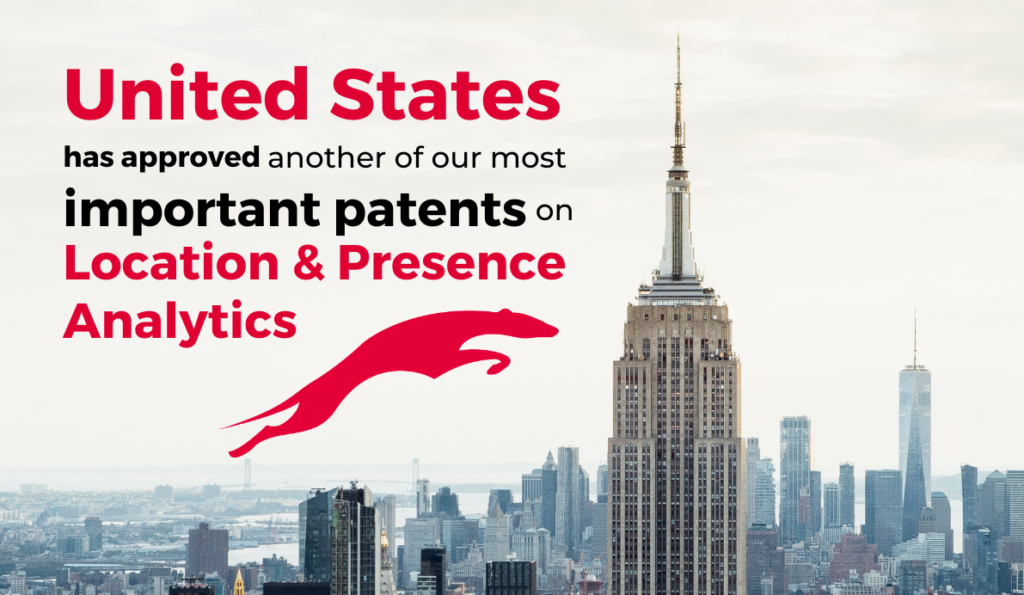A technology that can identify and track unconnected devices in different environments, even with random MAC addresses. This patent is an international recognition of Galgus’ innovation and opens the door to the U.S market.
This news marks an important milestone in our ability to apply this innovative technology, recognised internationally by Gartner, in a priority market such as the United States.
The key to this patent is that it allows us to generate a unique identifier for each unconnected device, even if it has a random MAC address, and even if several devices of exactly the same type enter the analysis area. We call this identifier the “Galgus Fingerprint”, as it is a stable and robust fingerprint for each unconnected device.
This makes it possible to count and track these devices with an accuracy an order of magnitude (10x) above other classic WiFi analytics systems, which is essential for building counting metrics, automatic visitor segmentation, movements between zones, calculation of average times of presence, etc. Both in real time and historical.
Accuracy and robustness tests carried out in real environments (with thousands of real devices, users and behaviours) have shown an accuracy of more than 87% in counting non-connected devices, both in real time and historically.
This study has been endorsed by the international scientific community and published at the prestigious IEEE MTT-S Radio & Wireless Week conference, held in January 2023 in Las Vegas, Nevada (U.S).
The applications of this technology are multiple and cross-cutting, as it can be adapted to a wide range of scenarios.
These include the ability to locate WiFi devices in real time in different environments, such as smart cities, airports, shopping centres and hotels, using only the WiFi network deployed, without the need to request permissions from users or install invasive applications.
They don’t need to install any apps, grant permissions, activate their Bluetooth or GPS, or even use the device. They don’t even need to have the WiFi button on.
In addition, the aggregated and anonymised data analysed can be refined using machine learning techniques to perform a variety of functions.
These include estimates of the number of people present based on the number of devices. The technology can also be used to predict crowds and crowd flow patterns, which is particularly useful in security, logistics, control, marketing and other applications.
This data can be compared with other available sources of information (weather, security camera, ticketing or pricing data, etc.) and exploited to improve the design and operation of the environment.
The extension of our core analytics patent in the U.S is a significant achievement that will allow us to take full advantage of the benefits of Location & Presence Analytics technology in such an important market.
We are excited about the potential this technology has to transform the way we understand and optimise the physical environments in which we interact on a daily basis, with its wide range of applications.
Galgus will continue to explore new opportunities to develop innovative solutions based on this technology, so stay tuned and we will keep you posted!









